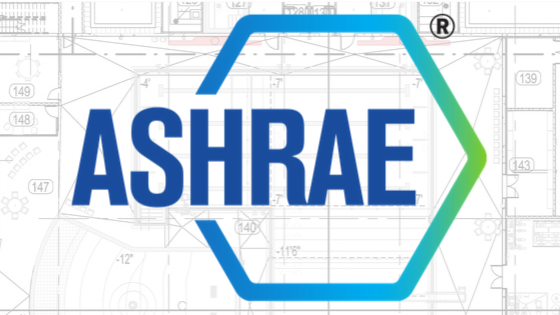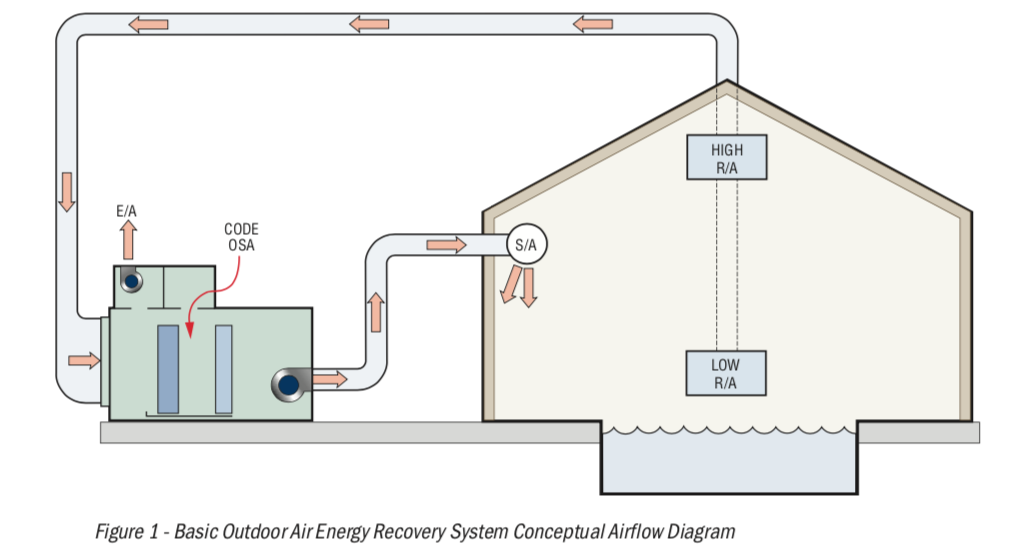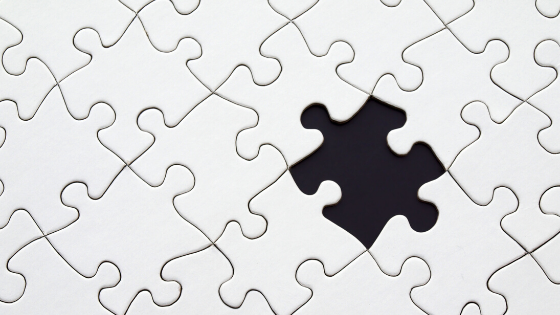What is the Ideal Indoor Swimming Pool Temperature?
We are frequently asked what air and water temperatures should ideally be for indoor swimming pools. The short answer is: it depends. So let's explore both water temperature and air temperatures, and how they relate to one another.
Covered in this article:
- Indoor pool air temperature
- 2º rule of thumb
- Indoor pool water temperature
- Swimmer comfort
- Is there an ideal pool temperature?
- Conclusion
Indoor pool air temperature
Natatorium air temperature mostly depends on how the pool is used and the water temperature. This gets complicated in indoor pool venues with multiple bodies of water that have different temperatures, but in most indoor pool rooms, it's one body of water. Either way, consult your pool dehumidifier manufacturer for assistance with the moisture load calculations. Quality PDU manufacturers have this down to a precise science, and should be used as a resource by mechanical engineers designing any natatorium.
In short, the rule of thumb is the air temperature of an indoor pool should be two degrees (2º) warmer than the water, but a maximum of 86ºF (30ºC). For practical purposes, this works for both Fahrenheit and Celsius, as long as you're using the same unit of measurement for both water and air.
Related: Indoor pool air quality resources
2º Rule of Thumb
So why 2º above the water temperature? Honestly we didn't actually know, so we scoured ASHRAE §62.1, and also spoke with pool dehumidification experts for help.
We need to remember that the primary purpose of indoor pool dehumidification is to maintain a consistent relative humidity (RH) in the space. Doing so allows the dehumidifier to also control other aspects of the indoor enviornment such as dew point, evaporation rate, and air temperature. According to ASHRAE §62.1:
"The relation between temperature and humidity determines evaporation from the pool water surface and the space's condensation dew point. To minimize evaporation and operating costs, the air temperature should be kept as warm as practical, ideally at or above the water temperature, with a maximum of 86ºF db, which is generally understood to be the maximum for human comfort." 1
Just for clarification, the db in "86ºF db" stands for dry bulb temperature, aka what a standard thermometer reads. Since the relationship between air and water temperature is a primary driver of evaporation rate, maintaining slightly warmer air keeps evaporation to a minimum. That is, of course, up to 86ºF (30ºC). To find out why, we asked the President of Desert Aire, Keith Coursin.
"If the air temperature is below the water temperature, evaporation really starts to increase in an exponential function, and a facility must spend more capital and operational costs while making the swimmers miserable.
...[The rule of thumb of 2º] applies to regular temperature pools in the 80-84ºF water temperature range. Where we see the issue is in therapy pools with water temps above 88ºF. If you use the 2º guide, now the air temperature is getting into the risk factor for users of the pool, so we remove the guidance. We recognize the higher evaporative load, but designers must compromise capital and electrical costs for user health." - Keith Coursin
ASHRAE §62.1 goes on to say
"Air temperatures in public and institutional pools are recommended to be maintained 2 to 4ºF above the water temperature (but not above the comfort threshold of 86ºF) for energy conservation through reduced evaporation and to avoid chill effects on swimmers." 2
All that is to say, it's best to maintain an air temperature about 2º above your water temperature, up to a maximum of 86ºF (30ºC). This keeps your evaporation rate under control and minimizes discomfort for wet swimmers out of the water.
Indoor pool water temperature
 Water temperature, if you ask pool dehumidification experts, is one of the most frustrating independent variables. When kept at a constant temperature according to the original design, it's no issue at all; the HVAC system was designed to handle it. But all too often, patrons complain about cold water, and facility operators eventually bump up the temperature.
Water temperature, if you ask pool dehumidification experts, is one of the most frustrating independent variables. When kept at a constant temperature according to the original design, it's no issue at all; the HVAC system was designed to handle it. But all too often, patrons complain about cold water, and facility operators eventually bump up the temperature.
That's when the wheels fall off.
It may seem innocent to raise the water temperature just a couple of degrees, but it has a substantial impact on the indoor environment, especially if the dehumidification system is not adjusted to handle the new temperature. Or worse, if the PDU is not capable of handling the new temperature, because it was originally designed for a lower water temperature. We see this quite often in our facility evaluations. It's a very costly mistake.
Higher water temperatures may feel good for swimmers, but if the dehumidifier cannot handle the additional moisture load, the relative humidity (RH) goes up. And as Keith mentioned in the earlier section, if air temperature is below the water temperature, evaporation starts to exponentially increase. Unless the PDU was designed to handle the additional moisture load, it won't be able to. Don't let it happen to you.
Swimmer comfort
 There's a term called "programming" a pool. Programming a pool means building a schedule for events, classes, and other activities to maximize the use of the pool during operational hours. Generally it's associated with revenue for the natatorium facility, but it's also critically important during the design phase. If your pool was programmed for competitive swimming as its primary purpose, the secondary purposes of things like water aerobics, swimming lessons and other less-intense activities will probably find the water too cold for comfort.
There's a term called "programming" a pool. Programming a pool means building a schedule for events, classes, and other activities to maximize the use of the pool during operational hours. Generally it's associated with revenue for the natatorium facility, but it's also critically important during the design phase. If your pool was programmed for competitive swimming as its primary purpose, the secondary purposes of things like water aerobics, swimming lessons and other less-intense activities will probably find the water too cold for comfort.
Competitive swimming pools are ideally between 78-82ºF (25.5-27.7ºC). Warmer water can lead to overheating for competitive swimmers (we know this from personal experience, and it's not fun). Most non-competitive swimmers, however, think 82ºF is too cold. They may prefer 84-88ºF. And small kids and elderly people tend to want it closer to 90ºF. So who wins?
Usually the group that speaks up the most, and the loudest gets their way. And unfortunately, fluctuating water temperatures to make patrons happy is a recipe for costly disaster from a dehumidification and indoor air quality perspective. The room gets muggy, hot and very humid. In other words, it's miserable. Nevermind the added costs of heating the pool to varying degrees.
Is there an ideal pool temperature?
This question of water temperature really comes down to how the pool is being used. And our advice to any mechanical engineer or architect reading this is to look at the planned programming for the pool, and just assume they'll go at least 2º warmer in water temperature at some point in the next few years. Design a more robust system that can handle the additional moisture load. Yes it's more capital costs up front, but the cost of destroying the PDU and making everyone inside miserable is far worse. Trust us, we've seen it more than once. Facilities have had to be shut down for several weeks while a new compressor (or even a full replacement dehumidifier) was being ordered. How much do you think a shutdown costs?
We would give an ideal temperature, but the difference between a swim school and a competitive pool is just too wide. Competitive swimmers want ~80-82ºF, and everyone else wants it warmer. Program the pool properly, and find out what the patrons will be using the pool for.
So no, there is no ideal pool temperature. It depends on who is using the pool, and for what.
Conclusion
There is no ideal water temperature for a pool, because it depends on how it is used. The international FINA standard for competitive swimming temperature is between 77-82.4ºF (25-28ºC).3 Most swim schools operate about 88-90ºF (31-32.2ºC). Know how the pool is being used, and hope the pool stays at that temperature or lower. But since hope is not a strategy, mechanical engineers and dehumidifier manufacturers should be prepared for at least 2º warmer water than what is planned for. It's better to have extra capacity and not use it than to be under-designed.
And even if the PDU system is capable of more moisture removal, if you're an operator thinking of increasing your water temperature, make the phone call to the HVAC company before you do so. They need to be aware that the original design parameters are about to change.
1 ASHRAE Design Handbook, 2019 edition, §62.1, pg. 6.1.
2 ASHRAE Design Handbook, 2019 edition, §62.1, pg. 6.5.
3 FINA Regulations, pg.6, §FR 2.12.

 By
By


